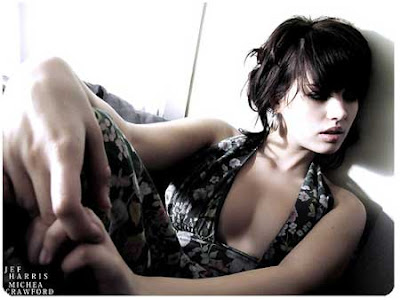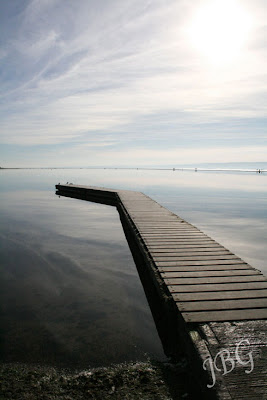Our Task was to produce an 8 shot journey using only camera shots and no camera movement. We were told to show our subject leaving a place and reaching a destination, and it had to be clear and inventive.
I decided that my subject was going to be enter the college, walk across the atrium, enter the media block and go into the TV studio.
To do this, I first started with a wide shot of my subject walking towards the camera and then another shot of the subject walking into the college. I then placed the camera on the turnstiles to give the next shot depth as the subject walked through them and entered the atrium. I then used a mid shot of the subject walking past the tables in the atrium and a close up of her feet which were framed through the legs of a chair. I then used another mid shot of my subject walking into the media block and a close up of her using her card top open the door. Finally I used a mid shot of her walking into the TV studio and then used a fade out at the end. Overall, I was happy with my 8 shot journey however, it was sometimes quite hard to film certain parts due to the fact that the college is very busy during the day and there were lots of people walking into shot whilst we were trying to film.
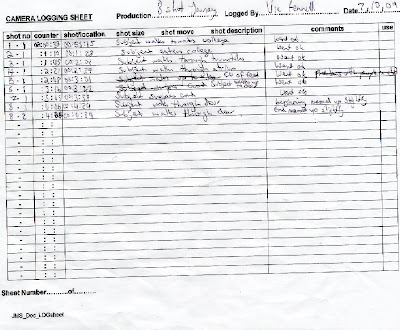
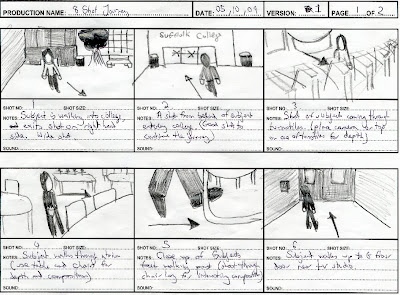
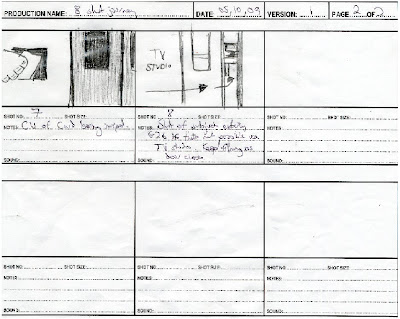
Building Blocks of Cinematography
A frame is a single cell of film. In film-making 24 frames make up one second. So real time film is 24 frames per second (fps). In video, if you wish to shoot real time you will need to shoot 25 fps.
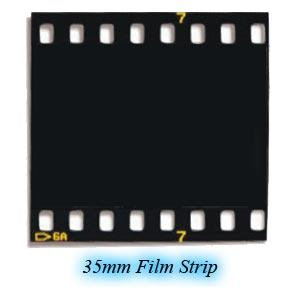 In film and video, a shot is a continuous strip of motion picture film, created by a series of frames that run for an uninterrupted period of time.
In film and video, a shot is a continuous strip of motion picture film, created by a series of frames that run for an uninterrupted period of time.  A sequence is a series of scenes which form a distinct narrative unit, usually connected either by a location, unit, or a passage of time. They can also follow a narrative and usually have a beginning, middle and an end of some description.
A sequence is a series of scenes which form a distinct narrative unit, usually connected either by a location, unit, or a passage of time. They can also follow a narrative and usually have a beginning, middle and an end of some description. A movie (film) or programme, are entire bodies of work. They are created through frames, shots, scenes and sequences. They also have some form of a beginning, middle and end.
Shot Sizes: Communicating Meaning
There are a variety of shot sizes, from extreme close ups (ECU) to a very long shot (VLS)/ wide shot. Different shots serve a different purpose and they communicate information, emotion and details of the intended meaning of the Director.Generally when filming you start away from the action (LS) and gradually move closer (CU) drawing the viewer into the scene and the action.

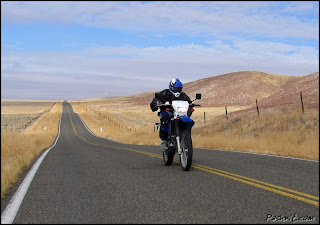

An example of a LS
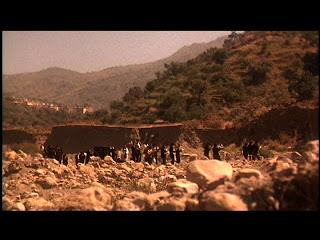
To establish a location or setting it is best to use a wide shot so the viewer can drink in all of the general information. And as there is a lot of it, it needs to be onscreen for a while.
If the Director wants to communicate or highlight something of interest to the viewer, such as an important prop or character emotion, they are likely to use a close up. These need less time onscreen as there is less information to take in.
Composition: Rule of 1/3rds
The rule of thirds is a fundamental rule of composition that objects placed off centre are more interesting to look at.
A grid is imagined over the fame (like noughts & crosses) and generally the eyes are on the top line (eye line), the horizon on the bottom (horizon line) and the subject on either of the two vertical lines.
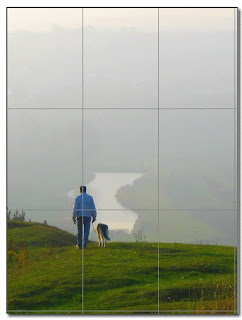
The sweet spots are where the lines intersect and where you want to place the subject, considering looking/moving space.
180º Line Rule: Line of Action
The line of action is and imaginary line you must not cross, or the action will be inconsistent when you cut together during the editing process.
Position 1: Camera below the line, action is moving from right to left in the shot.
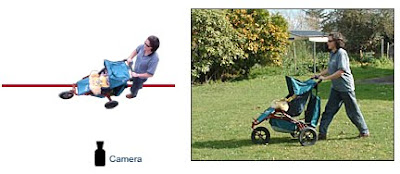
Position 2: Camera above the line, action is moving from left to right in the shot.
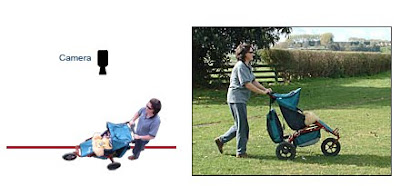 You must always film the action from one side of the 180º line or your action will not edit properly and the movement in the shot will simply not work. The only exception is if you cross the line during a shot by moving the camera across the line during a tracking type shot
You must always film the action from one side of the 180º line or your action will not edit properly and the movement in the shot will simply not work. The only exception is if you cross the line during a shot by moving the camera across the line during a tracking type shot
Camera Angle
High angle shots make the subject of the shot seem weak and inferior.
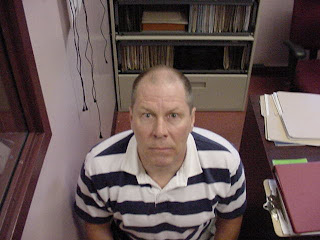
 Canted angle or Dutch tilt shots make the frame seem awkward and mysterious as we do not see the world this way.
Canted angle or Dutch tilt shots make the frame seem awkward and mysterious as we do not see the world this way.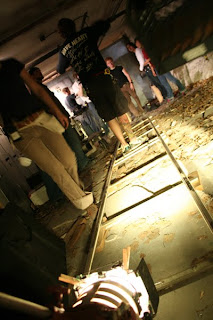
Camera Height
As human beings we generally see the world at eye level standing up or sitting down. If we shoot the camera at eye level it is how we are used to seeing the world, so it is comfortable.
Use of Line and Diagonals
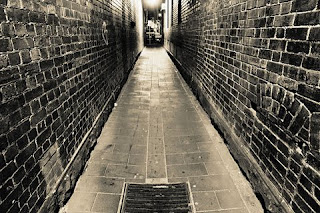
Camera Depth of Field and Action Planes
Shallow focus is when certain subjects are in focus and other elements are not and you have a small depth of field. It draws attention to what is in focus.Deep focus is when everything in the shot is in focus and you have a large depth of field. It makes everything in frame seem important as it is all in focus and sharp.Action planes are the foreground, middle ground, and background. The best and most interesting shots incorporate all of these or at least two.
Film/ TV Conventions
Continuity of travel: If your subject enters the shot camera left and exits camera right, this must continue. Only if your subject changes direction in shot and enters camera left and leaves camera left. This works both ways.
Edit points: When shooting, consider your edit points in your head. A good way to go is to let your subject completely leave the frame and then completely enter again in the next shot.
Cut ins and cutaways: These are shots that can help with continuity and also adds to the action. For instance, cutting away from a LS of someone lighting a cigarette to a CU back to the LS. They add interest and can cover up mistakes.
Compression of Time: Film editing is all compression and manipulation of time generally to compress (montage) but can also elongate (slo-mo).





